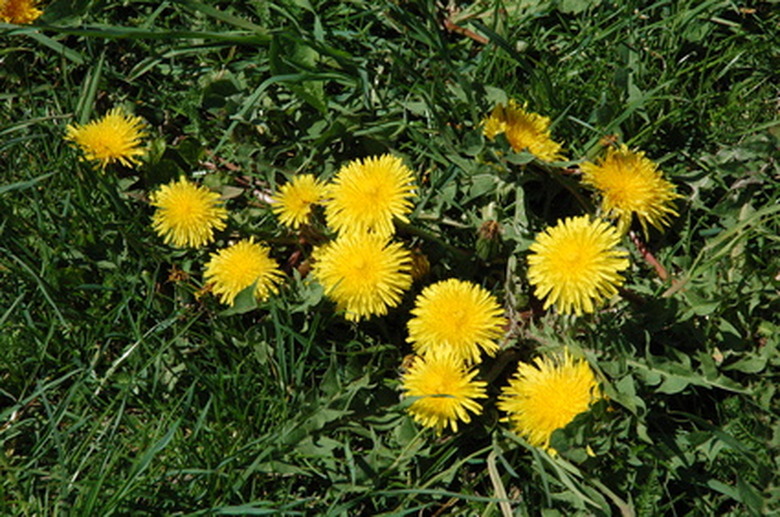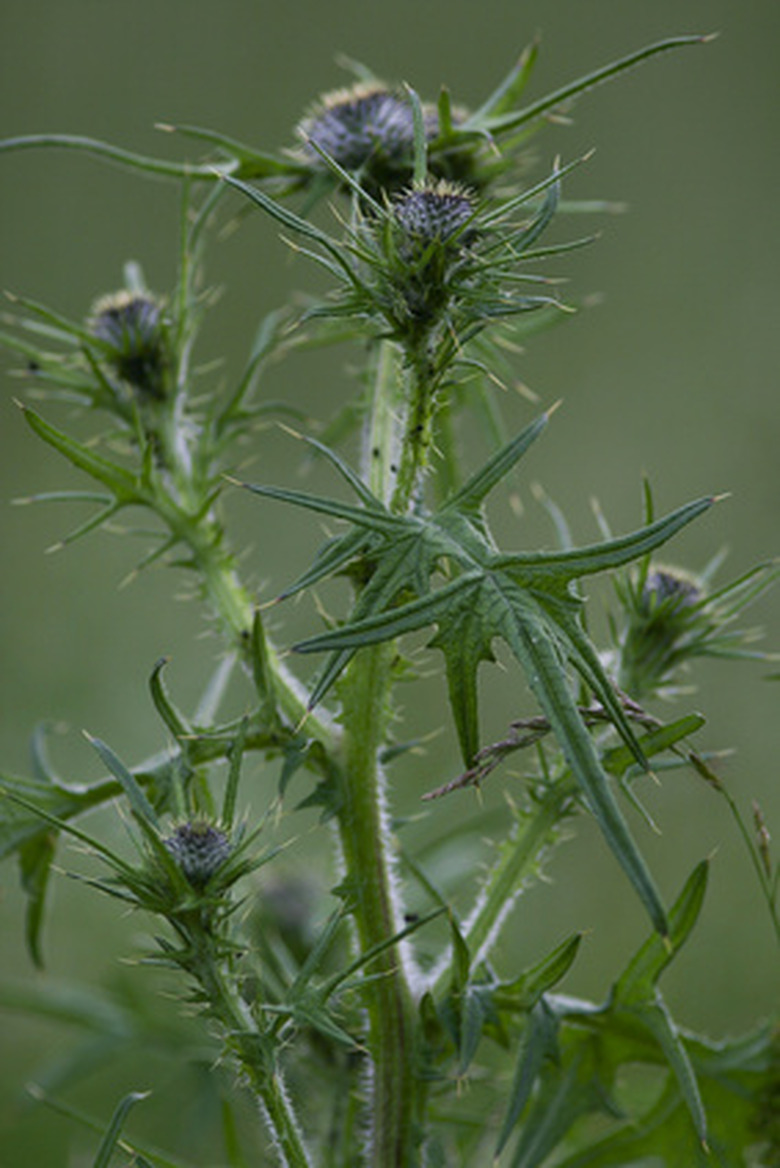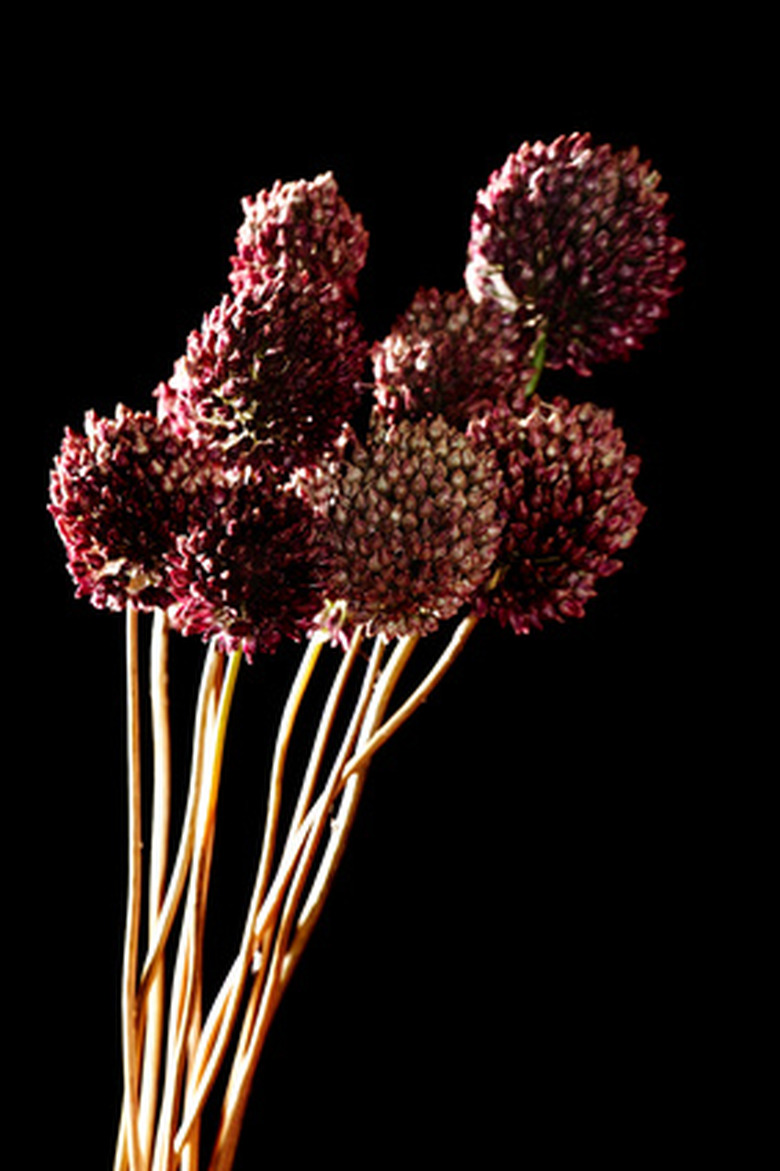Types Of Weeds & Weed Killers
Weeds are divided into three major categories: broadleaf weeds, grassy weeds and grass-like weeds. Many different weed killers are available for controlling weeds, many of which have very different mechanisms for killing the weed plants. Some herbicides are more effective than others on certain types of weeds and some can be harmful to the grass in your lawn.
Broadleaf Weeds
Broadleaf weeds are leafy plants that often have flowers. They are usually the easiest types to identify, due to their wider, multiple leaves with flat, broad leaves arranged at the stem's base, often in a rosette shape. The leaf veins have a "netted" appearance. Some common broadleaf weeds include dandelions, henbit, clovers, lespedeza, plantain, chickweed, burdocks, thistles and wood sorrel.
- Weeds are divided into three major categories: broadleaf weeds, grassy weeds and grass-like weeds.
- Many different weed killers are available for controlling weeds, many of which have very different mechanisms for killing the weed plants.
Sedges and Grass-Like Weeds
Sedges and rushes are grass-like weeds that can be tough to distinguish from true grassy weeds. Sedges have triangular, solid stems, but rushes have round, solid stems. Most often found in moist or irrigated lawns, these grass-like weeds include nutsedges, wild garlic or onion, path and beak rushes, as well as globe weeds.
Grass-Type Weeds
Grass-type weeds are true grasses and can be difficult to identify. Grassy weeds can be annuals or perennials and include crabgrass, goosegrass, dallisgrass, annual bluegrass, crowfootgrass and other undesirable, invasive grasses. Because they are true grasses, grassy weeds have hollow, rounded stems and parallel veins on their blade leaves.
Pre-Emergence Herbicides
Pre-emergence herbicides are applied in late winter or early spring to kill weed seeds before they germinate. Most often used to control annual grassy weeds and annual broadleaf weeds, such as chickweed, henbit, crabgrass and goosegrass, pre-emergence herbicides have no effect on weed seeds that have already germinated. In general, pre-emergence herbicides are effective in controlling weed seeds for about 6 to 12 weeks and they can also kill grass seeds, so they shouldn't be applied to lawns within two to four months prior to seeding or at least one month after seeding.
- Sedges and rushes are grass-like weeds that can be tough to distinguish from true grassy weeds.
- Most often found in moist or irrigated lawns, these grass-like weeds include nutsedges, wild garlic or onion, path and beak rushes, as well as globe weeds.
Post-Emergence Herbicides
Post-emergence herbicides are used to kill weeds that have already germinated and begun to grow. Post-emergence herbicides are most effective when the weed plants are young and before they've begun to produce seed-s.
Non-Selective Herbicides
Non-selective herbicides, also called "broad spectrum" herbicides, kill nearly all plants they comes into contact with and include glyphosate, diquat and glufosinate. Non-selective herbicides are most commonly used to kill weeds in sidewalks, driveways and between pavers in other hardscapes.
Selective Herbicides
The most common type of weed killer, selective herbicides kills only certain plant species. Most selective herbicides target broadleaf weeds and can be applied to large lawn areas without hurting the grass. Some selective herbicides target sedges and rushes, but these can be harmful to certain types of lawn grasses.
- Post-emergence herbicides are used to kill weeds that have already germinated and begun to grow.
- Non-selective herbicides are most commonly used to kill weeds in sidewalks, driveways and between pavers in other hardscapes.
Contact Herbicides
Contact herbicides kill only the part of the plant that the chemical touches, usually the aboveground leafy parts. These herbicides won't kill the underground roots or rhizomes and usually require several applications to completely get rid of the weed population. In lawns, contact herbicides are most often used for spot treatments of weeds growing in small, isolated areas. Most contact herbicides are also classified as non-selective, or broad-spectrum, weed killers, such as diquat and glufosinate.
Systemic Herbicides
When applied to the aboveground leafy parts of the weeds, systemic herbicides travel into the weeds' vascular system and into the roots or rhizomes. Although slower in killing the weeds, systemic herbicides are effective in breaking down the weeds' ability to transport nutrients and water throughout the rest of the weed plant. Some common systemic herbicides include dichlorophenoxyacetic acid, dicamba, sethoxydim and imazaquin.
- Contact herbicides kill only the part of the plant that the chemical touches, usually the aboveground leafy parts.
- These herbicides won't kill the underground roots or rhizomes and usually require several applications to completely get rid of the weed population.


